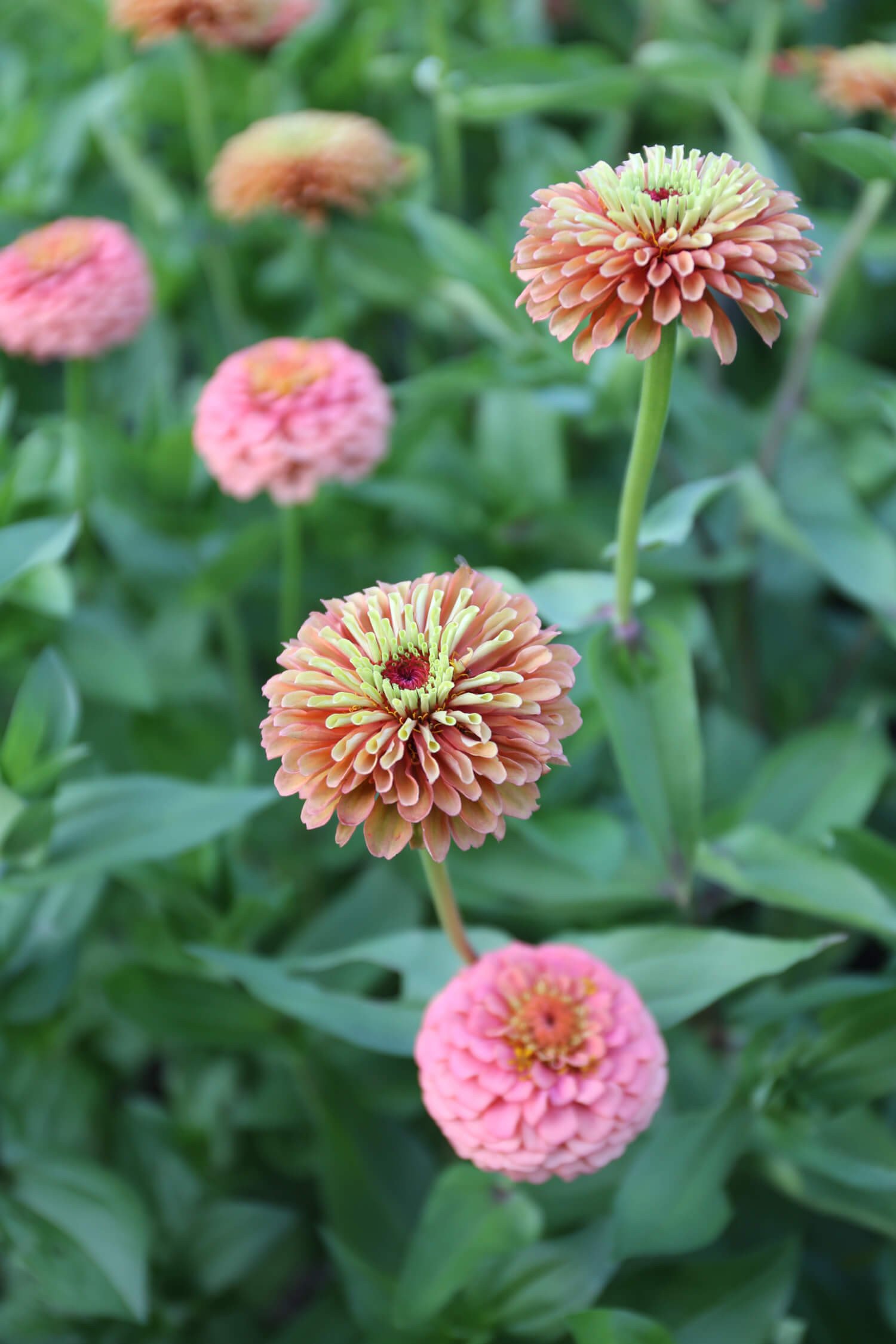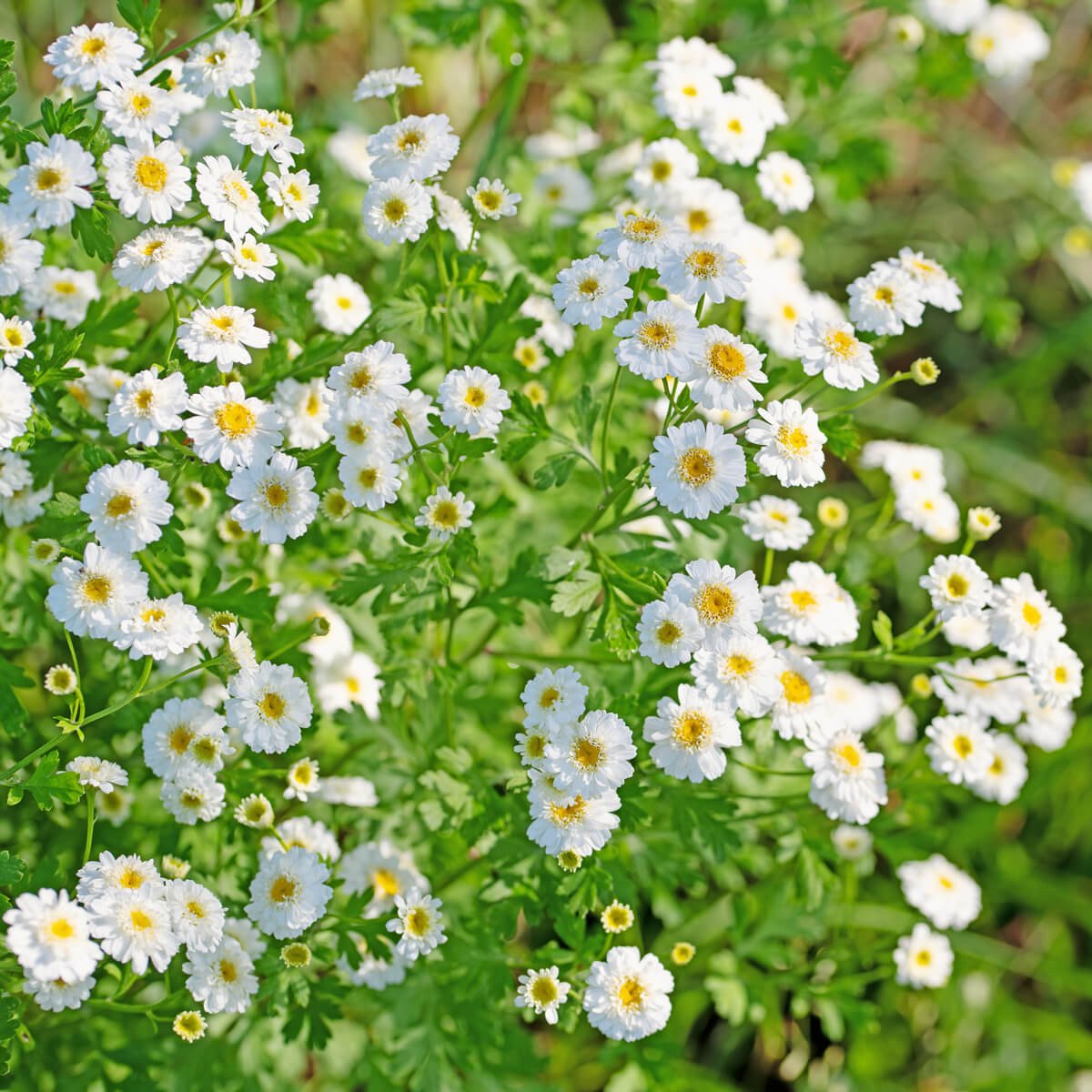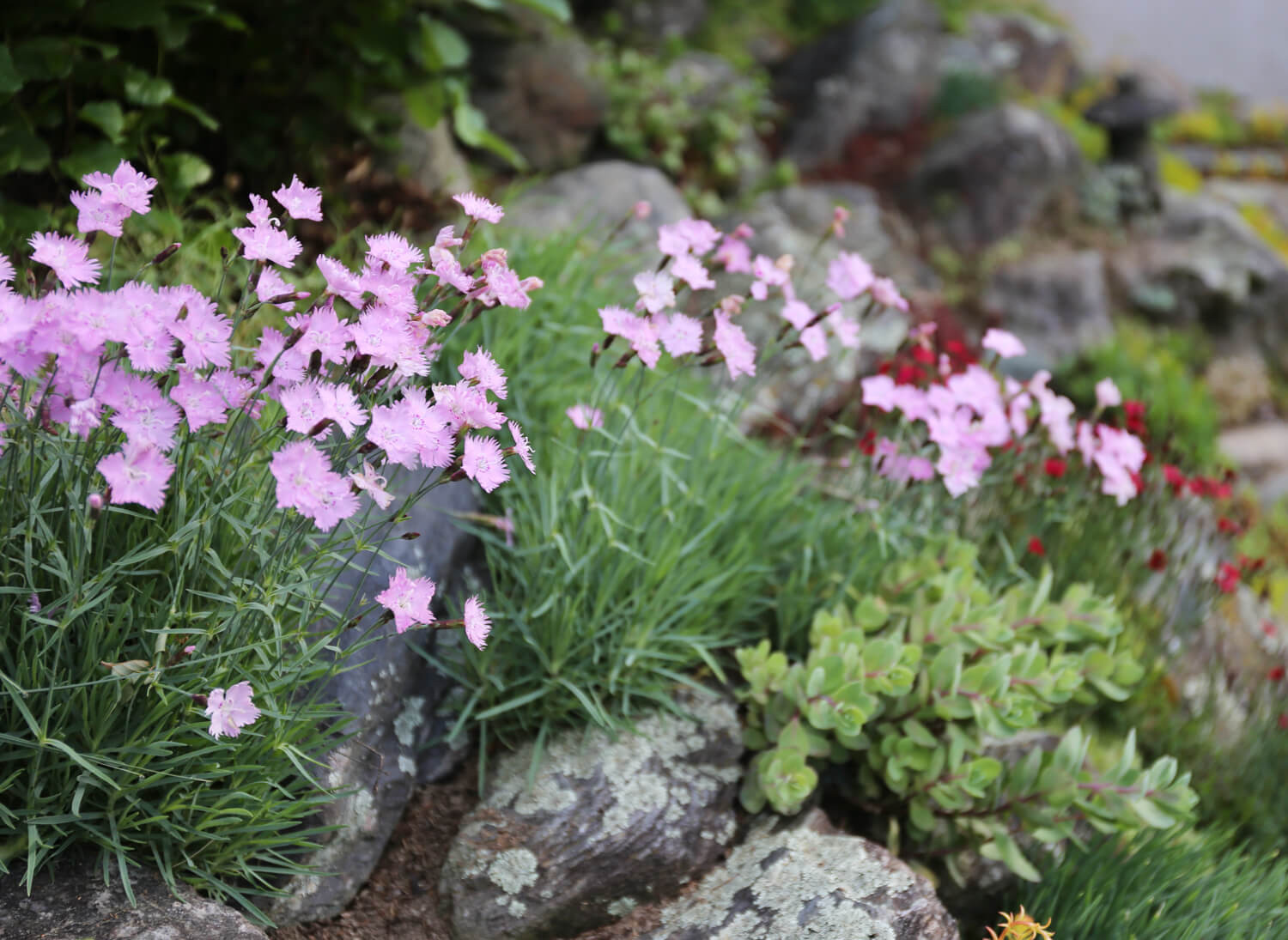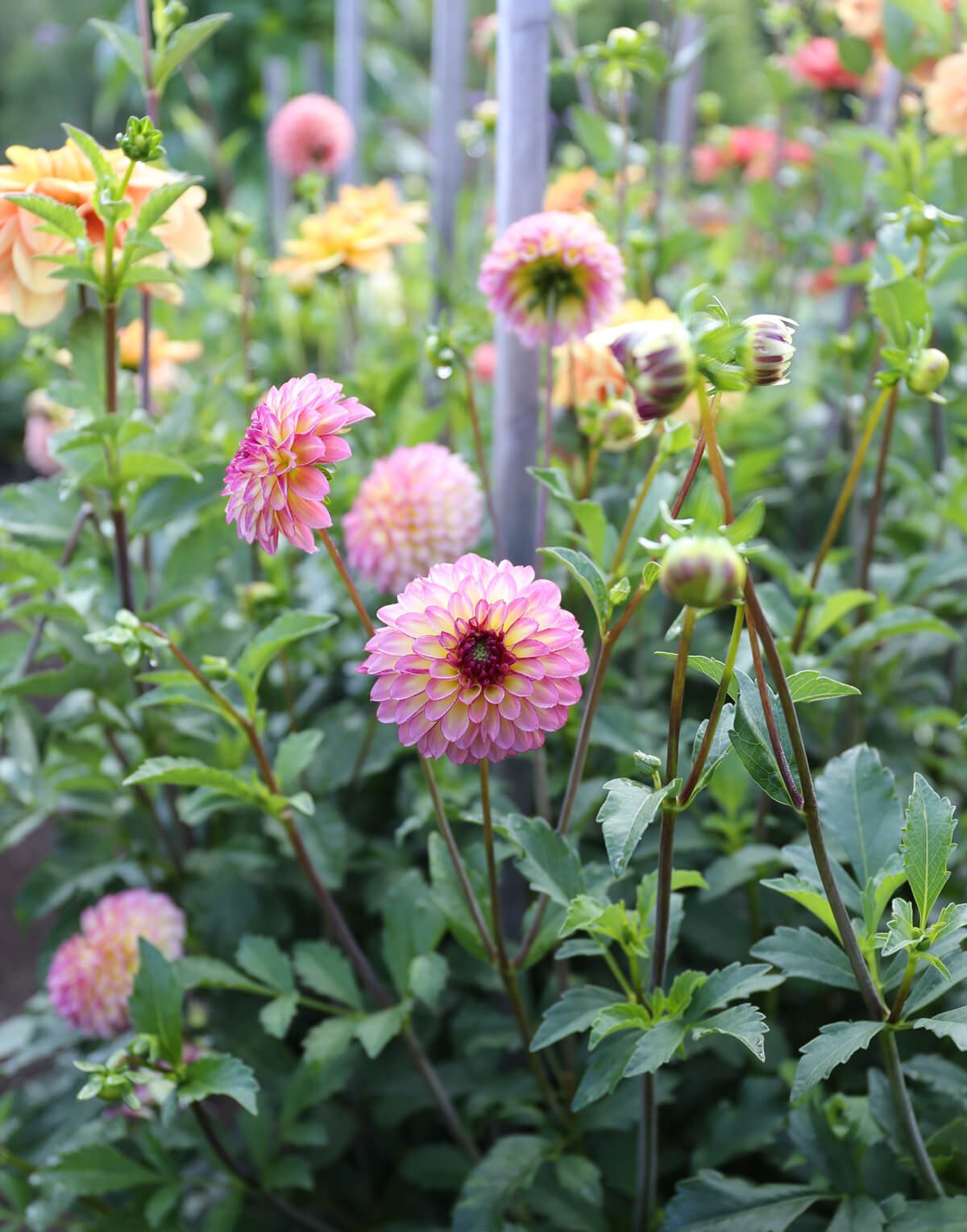Removing Spent Flowers Encourages More Blooms
If you are a flower gardener, deadheading is a task you can’t ignore. Removing spent flowers keeps your plants looking neat and tidy. But more importantly, deadheading discourages plants from producing seeds, and this helps them conserve energy so they can continue flowering.
It's easy to identify which flowers are dead and need to go. But it's also useful to know when and how to remove these spent flowers, because not all plants respond to deadheading in the same way.
 Nigella (love-in-a-mist) is a short-lived annual. For continuous blooms, sow the seeds in batches from early spring through early summer.
Nigella (love-in-a-mist) is a short-lived annual. For continuous blooms, sow the seeds in batches from early spring through early summer.
Deadheading Annuals
An annual is a plant that lives for only one growing season. It goes from seed to plant to flower, and then produces a crop of new seeds for the following year. Once these seeds begin to form, the plant’s mission is complete. Growth slows, new bud formation stops, and the plant eventually dies back.
Deadheading is a way to delay this natural process. Removing the plant’s flowers before they can set seed, encourages the plant to continue generating new buds and blooms. But not all flowering annuals behave the same. Some are naturally longer-lived than others. Deadheading has little to no effect on short-lived annuals such as poppies, nigella, cerinthe, bupleurum, and larkspur. To extend their bloom time, sow several batches of seeds, 2 or 3 weeks apart.

A much larger number of annuals, including marigolds, zinnias, calendula and snapdragons, are inclined to continue blooming until frost as long as they get adequate water and nutrients. Keeping these plants deadheaded will give you more flowers and help the plants stay vigorous and attractive.
 This Silverberry Supertunia is unable to produce seeds. Its spent blooms fall off on their own and are replaced by new flowers.
This Silverberry Supertunia is unable to produce seeds. Its spent blooms fall off on their own and are replaced by new flowers.
Thanks to plant breeders such as Proven Winners, there are now some annuals that don't need to be deadheaded. These plants were bred to be sterile, so can only be propagated via cuttings. Since the plants are unable to produce seeds, they never slow down and will continue blooming right until frost.
Though these sterile plants do not require deadheading, most of them still benefit from being cut back midseason to encourage fresh growth and improve overall appearance. Gardeners can now purchase sterile cultivars of impatiens, petunias, calibrachoa, lantana, angelonia, verbena, nemesia, lobelia, begonias and more.
 Removing spent blooms lets the remaining flowers shine.
Removing spent blooms lets the remaining flowers shine.
Deadheading Perennials
Deadheading perennials is a little more complicated. There are many perennials that only produce one flush of flowers per season. Removing spent blooms improves the plant's appearance and helps conserve energy, but will not result in additional flowers. Examples of once-blooming perennials include peonies, lilies, astilbe, baptisia, aruncus, crocosmia, Siberian iris, Oriental poppies, and most heirloom roses.
Other perennials can be encouraged to rebloom if they are deadheaded. You will get fewer flowers the second time around, and sometimes you won’t get any at all. But removing the spent flowers still benefits plants by helping them conserve energy. Perennials that are likely to rebloom after deadheading include daylilies, salvias, delphinium, helenium, echinacea, Shasta daisies, garden phlox, reblooming bearded iris, campanula, rudbeckia, yarrow, and salvias.
 This zinnia has passed its prime. Removing both the flower and the stem encourages new growth and keeps the plant healthier.
This zinnia has passed its prime. Removing both the flower and the stem encourages new growth and keeps the plant healthier.
Techniques for Deadheading
As a rule, it’s good to remove spent flowers as soon as possible. Wander through your garden at least once a week, and bring along a pair of scissors to remove blossoms that have gone by. While you’re at it, cut any neighboring flowers that are at their peak and display them in a vase indoors. This counts as deadheading!
 Snapping off spent daylily flowers at the base of the bloom will keep plants looking more attractive. Be gentle to avoid breaking off neighboring buds.
Snapping off spent daylily flowers at the base of the bloom will keep plants looking more attractive. Be gentle to avoid breaking off neighboring buds.
Nipping Buds
For some plants, you can simply use your fingers to pinch or snap off spent flowers. Use this technique for annuals such as petunias, calendula, angelonia, bidens, sanvitalia, begonias, geraniums, coleus and cosmos. Perennials that can have their flowers nipped off include daylilies, clematis, campanula, lilies, and roses. Once all the flowers are spent, you can cut off the entire stalk. Note that with lilies, it's important to only remove the spent flowers. Allow the stalks to remain in place until they yellow at the end of the season.
 Cut the stems of matricaria, also known as feverfew, to the ground after the flowers fade. New stems and flowers will appear within a few weeks.
Cut the stems of matricaria, also known as feverfew, to the ground after the flowers fade. New stems and flowers will appear within a few weeks.
Removing Stems and Stalks
For other plants, it’s best to remove the stem as well as the flower. Use scissors or garden snips to make clean cuts. This technique is good for most annual flowers that are grown for cutting, including zinnias, dahlias, asters, ageretum and snapdragons. It’s also a good way to rejuvenate petunias, coleus, calibrachoa and other annuals that tend to get leggy by midseason.
Perennial plants that should have both flowers and all or part of the stem removed include delphiniums, peonies, yarrow, foxgloves, matricaria, Shasta daisies, reblooming iris, salvias, sweet William, hostas and columbine.
 Dianthus is a good candidate for shearing. Cut off the spent flowers and enjoy the plant's lush, mounding foliage right until frost.
Dianthus is a good candidate for shearing. Cut off the spent flowers and enjoy the plant's lush, mounding foliage right until frost.
Shearing
Some perennials should get a haircut right after they flower. This encourages a new flush of foliage that dramatically improves the plant’s appearance. You can use snips or hedge shears, taking care to leave the newly developing foliage intact. Perennials that respond well to shearing include coreopsis, hardy geranium, perennial alyssum, silver mound artemisia, lavender, creeping phlox, candytuft, and nepeta. Shear on a cloudy day and follow it up with a dose of water-soluble fertilizer and a generous drink of water.

Learn as You Go
Don’t stress out about deadheading. No one is able to remove every spent flower in their garden. This task is about experimenting and learning as you go. Over time you’ll discover which plants benefit from it the most, and this will help you determine where to focus your energy. If you grow lots of perennials, you’ll find a wealth of plant-specific deadheading recommendations in this book by Tracy DiSabata-Aust: The Well-Tended Perennial Garden.
